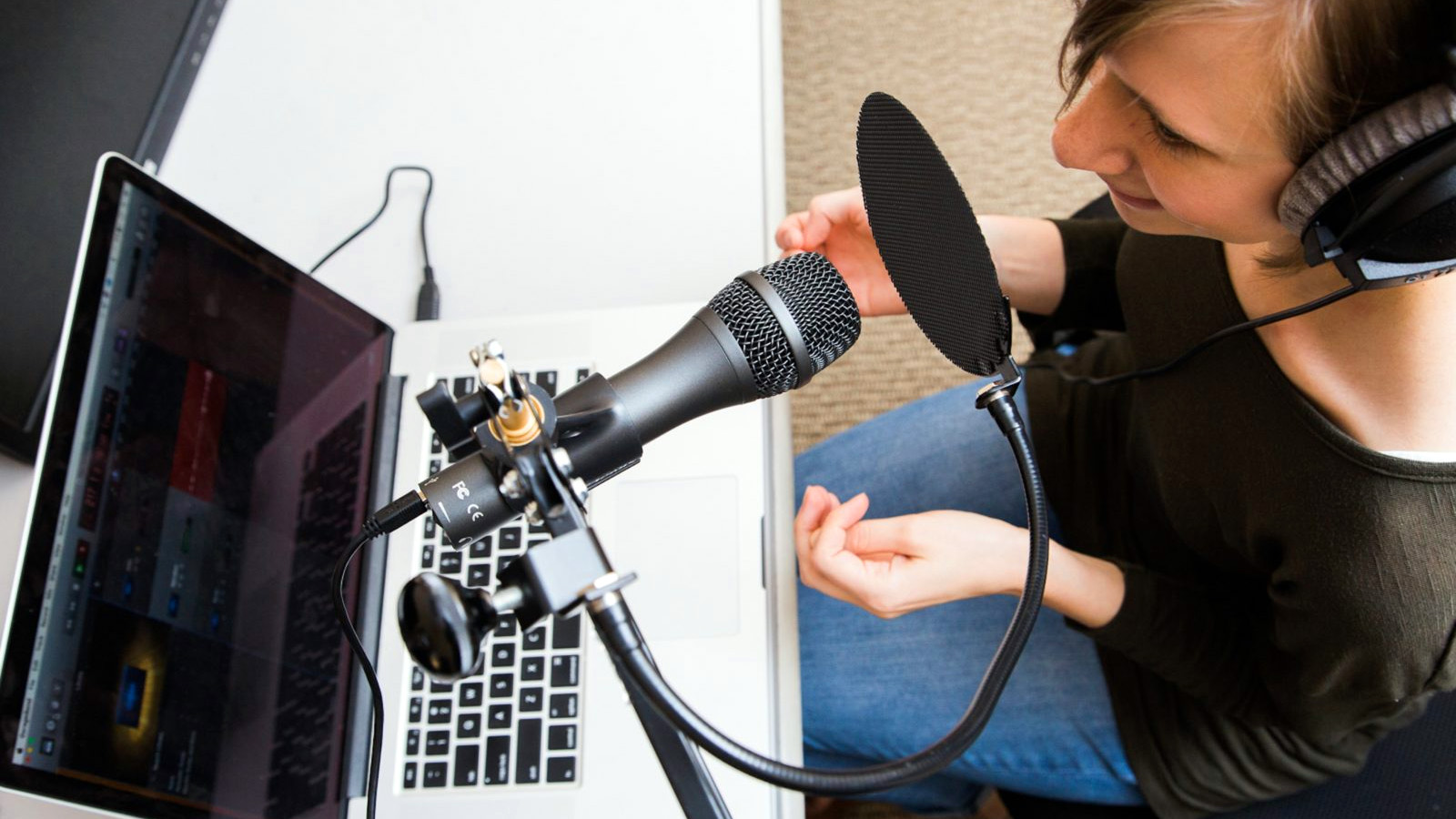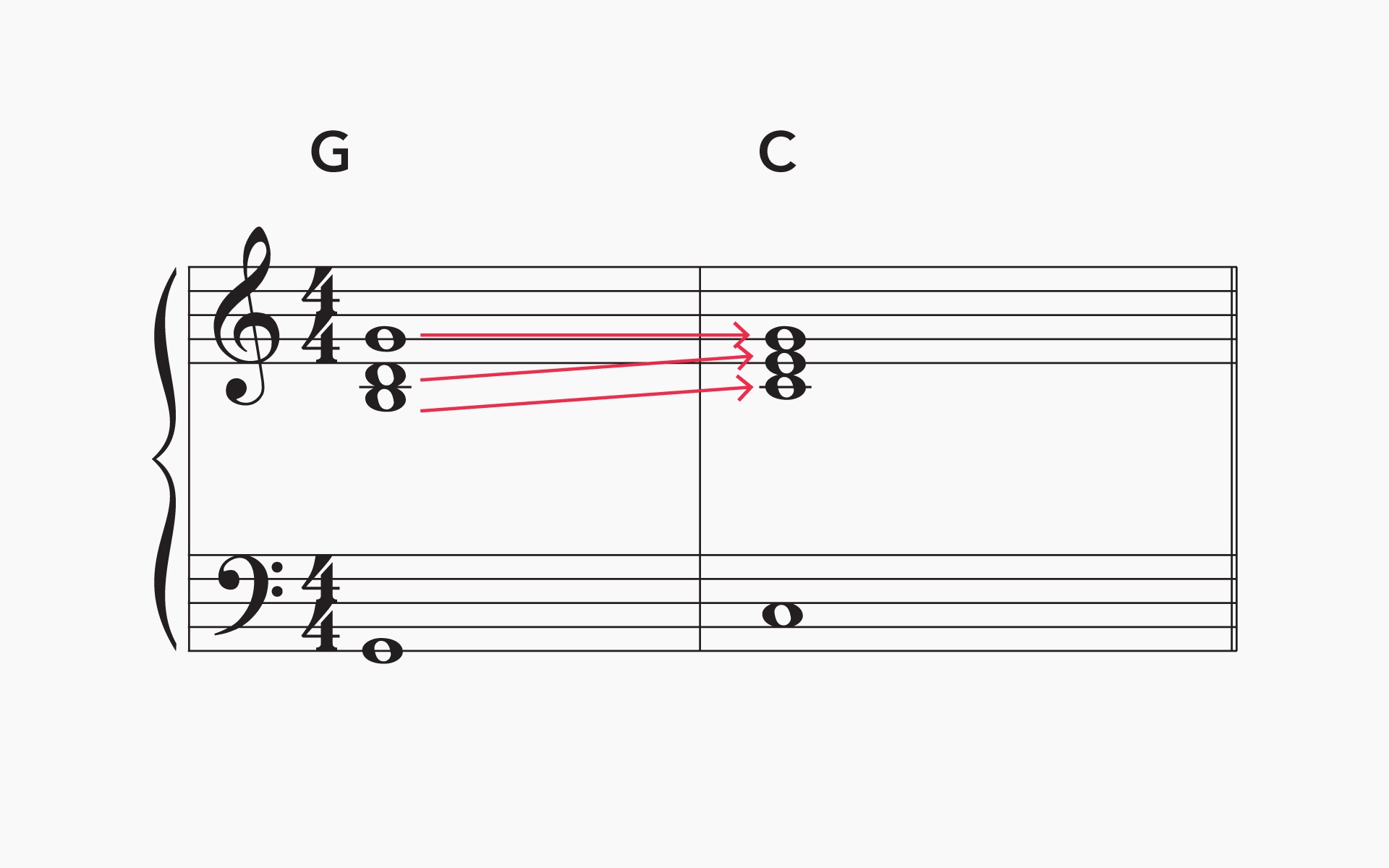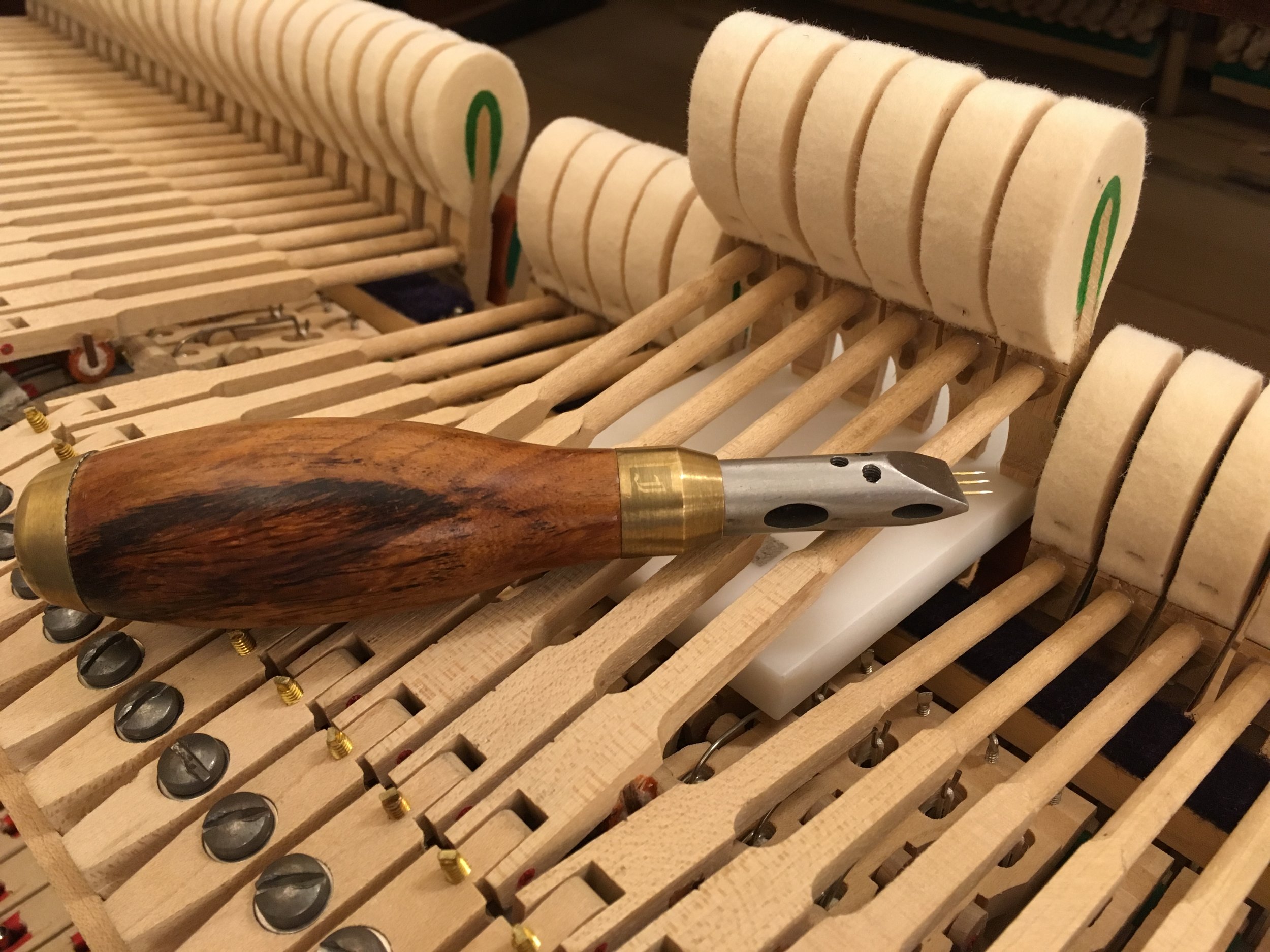Home>Devices & Equipment>Radio>How To Get A Radio Voice


Radio
How To Get A Radio Voice
Published: November 10, 2023
Learn how to achieve a captivating radio voice with our expert tips and techniques. Enhance your communication skills and master the art of radio broadcasting.
(Many of the links in this article redirect to a specific reviewed product. Your purchase of these products through affiliate links helps to generate commission for AudioLover.com, at no extra cost. Learn more)
Table of Contents
- Introduction
- Understanding the Radio Voice
- Developing Proper Breathing Techniques
- Enhancing Vocal Resonance
- Practicing Articulation and Pronunciation
- Using Vocal Exercises to Improve Tone and Clarity
- Maintaining Vocal Health and Hygiene
- Incorporating Emotion and Storytelling into Your Voice
- Recording and Editing Techniques for Radio Voice
- Conclusion
Introduction
Welcome to the world of radio, where voices have the power to captivate and engage listeners. A radio voice is distinct, commanding attention and conveying emotions through the airwaves. Whether you aspire to be a radio host, voice-over artist, or simply want to develop a more authoritative and captivating speaking voice, this article will guide you on how to achieve a remarkable radio voice.
Having a radio voice goes beyond having a pleasant tone or a deep timbre. It encompasses a range of qualities, including proper breathing techniques, vocal resonance, articulation, and emotion. It requires practice, dedication, and a willingness to continually improve and refine your vocal skills.
In this article, we will explore various techniques and exercises that will help you develop and enhance your radio voice. We will delve into the importance of breathing techniques for vocal support, vocal exercises to improve tone and clarity, and ways to maintain vocal health and hygiene. Additionally, we will discuss how to incorporate emotion and storytelling into your voice to engage and connect with your audience.
Furthermore, we will touch on the technical aspects of recording and editing your voice for radio, ensuring that your voice sounds professional and polished. These techniques will help you stand out in a competitive industry and allow you to showcase your unique talent and style.
Whether you are an aspiring radio broadcaster, a podcast host, or someone who wants to improve their public speaking skills, mastering the art of the radio voice can make a significant impact on how you connect with your audience. So, let’s dive in and discover the secrets to achieving a captivating and commanding radio voice that will leave a lasting impression!
Understanding the Radio Voice
The radio voice is more than just a voice that sounds good on the air. It is a voice that has the ability to engage, entertain, and connect with listeners. To truly understand the essence of a radio voice, it is important to consider the following elements:
- Tone: The tone of a radio voice sets the mood and creates a sense of presence. It can be warm and friendly, authoritative and commanding, or energetic and dynamic. A well-developed tone captures the attention of the audience and conveys the desired emotions.
- Clarity: Clear articulation is vital in delivering a radio voice. Every word should be pronounced crisply and distinctly, ensuring that the message is understood by the listeners. Avoid mumbling or slurring words, as it can diminish the impact of your voice.
- Pace: The pace at which you speak plays a crucial role in maintaining audience engagement. Speak too fast, and your words may become incomprehensible. Speak too slow, and you risk losing the interest of your listeners. Finding the right balance and adapting your pace to the content and tone of your voice is essential.
- Emotion: Emotion is what brings a radio voice to life. Your ability to convey emotions, whether it’s excitement, enthusiasm, empathy, or any other sentiment, will create a powerful connection with your audience. Embrace the emotions in your voice and use them to tell compelling stories that resonate with your listeners.
- Authenticity: A radio voice should reflect your personality and be authentic to who you are. Listeners appreciate genuineness and can quickly spot a forced or insincere delivery. Be yourself and let your unique qualities shine through your voice.
Understanding these key aspects of the radio voice will help you develop a deep appreciation for the art of voice broadcasting. As you embark on your journey to cultivate your own radio voice, keep these elements in mind and strive to master each one.
Next, we will explore techniques for developing proper breathing techniques, which are essential for achieving vocal power, endurance, and control.
Developing Proper Breathing Techniques
Proper breathing is the foundation of a strong and expressive radio voice. It provides the necessary support and control to produce clear, powerful, and sustained vocal delivery. Here are some techniques to help you develop your breathing skills:
- Diaphragmatic Breathing: The diaphragm is a dome-shaped muscle located below the lungs. When you breathe deeply, the diaphragm contracts, allowing the lungs to expand fully and draw in more air. Practice diaphragmatic breathing by placing your hand on your abdomen and inhaling deeply, feeling your belly rise. Exhale slowly and feel your abdomen fall. This type of breathing allows for better vocal control and projection.
- Posture: Maintain good posture when breathing, as it facilitates proper airflow. Stand or sit tall, aligning your spine and keeping your shoulders relaxed. This allows for unrestricted movement of the diaphragm and optimal lung capacity.
- Avoiding Shallow Breathing: Shallow breathing limits the amount of air your vocal cords receive and can result in a weak and strained voice. Practice deep and intentional breaths, expanding your lungs fully to maximize airflow.
- Controlled Exhalation: When speaking, it’s important to maintain control over your exhalation. Avoid exerting excessive force or letting the breath rush out too quickly. This control allows for precise articulation and vocal modulation.
- Practice Breathing Exercises: Incorporate specific exercises into your daily routine to strengthen your respiratory muscles and improve breath control. For example, try inhaling for a count of four, holding for a count of four, and exhaling for a count of four. Gradually increase the count as your breath control improves.
Remember, proper breathing is not only essential for vocal production but also for maintaining vocal health. It reduces strain and fatigue, helping to prevent vocal issues such as hoarseness or vocal cord damage.
Take the time to focus on developing your breathing techniques, incorporating them into your daily practice. With consistent effort and mindfulness, you will gradually enhance your ability to harness the power of your breath and unlock the full potential of your radio voice.
Next, let’s explore the importance of vocal resonance and techniques to enhance it in order to create a rich and captivating radio voice.
Enhancing Vocal Resonance
Vocal resonance is the quality that gives depth, richness, and projection to your voice. It allows your voice to carry and resonate with the listeners, making it more captivating and engaging. Here are some techniques to enhance your vocal resonance:
- Relaxation: Relaxation plays a significant role in enhancing vocal resonance. Tension in your vocal apparatus can hinder resonance and make your voice sound strained. Practice relaxation techniques such as deep breathing, stretching exercises, and vocal warm-ups to release tension in your body and promote a more resonant voice.
- Open Throat: An open throat creates space for sound to resonate freely. Imagine the feeling of a yawn or a sigh, and apply that sensation to your throat when speaking or singing. Keeping your throat open allows for a more resonant and vibrant sound.
- Focus on Resonating Areas: Different areas of your body contribute to vocal resonance. Pay attention to the chest, mouth, nasal passage, and head. Experiment with adjusting the position of your sound in these areas to find the optimum resonance for your voice.
- Articulation and Tongue Positioning: Proper articulation and tongue positioning can greatly enhance vocal resonance. Practice crisp and precise articulation, ensuring that your tongue is relaxed and positioned forward in your mouth. This helps to create clear and resonant vowel sounds.
- Resonance Exercises: Incorporate exercises that focus on resonance into your vocal warm-up routine. For example, hum at a comfortable pitch while focusing on feeling the vibration in your chest or nasal passage. These exercises help to strengthen your resonating areas and improve overall vocal quality.
By incorporating these techniques into your vocal practice, you will gradually strengthen and enhance your vocal resonance. It may take time and consistent effort to master, but the results will be worth it.
Next, let’s delve into the significance of articulation and pronunciation in delivering a clear and understandable radio voice.
Practicing Articulation and Pronunciation
In the realm of radio, clear and precise articulation is crucial for effective communication. Articulation refers to the clarity and accuracy with which sounds, syllables, and words are produced. Pronunciation, on the other hand, focuses on correctly articulating words and their sounds. Here are some tips to help you practice and improve your articulation and pronunciation:
- Enunciate Clearly: Pay attention to how you articulate each sound and word. Focus on pronouncing every syllable and consonant crisply and distinctly. Avoid slurring or blending words together, as it can make your speech less intelligible.
- Expand Your Vocabulary: Increase your vocabulary and familiarize yourself with commonly mispronounced words. Practice saying these words correctly to ensure clarity in your delivery.
- Listen and Repeat: Listen to professional broadcasters or native speakers with clear diction and mimic their pronunciation. Pay attention to how they articulate words and try to replicate those sounds. Record yourself and compare your pronunciation to the original to identify areas for improvement.
- Tongue Twisters: Tongue twisters are excellent exercises for developing articulation skills. Practice tongue twisters that contain challenging sounds or combinations of sounds. Repeat them slowly and gradually increase the speed as you become more comfortable.
- Get Feedback: Seek feedback from others to gauge your articulation and pronunciation. Have a trusted friend or language coach listen to your recordings and provide constructive feedback. They can help identify areas where you need improvement and suggest specific exercises to address those issues.
Consistent practice is key to improving articulation and pronunciation. Devote time each day to focus on these skills and integrate them into your routine. Over time, you will develop clarity and precision in your vocal delivery, ensuring that your radio voice is easily understood by your audience.
Next, let’s explore the importance of vocal exercises in improving tone, clarity, and overall vocal quality.
Using Vocal Exercises to Improve Tone and Clarity
Vocal exercises are invaluable tools for honing your radio voice and enhancing its tone, clarity, and overall quality. These exercises help improve vocal control, flexibility, and strength. Here are some exercises to incorporate into your practice routine to improve your tone and clarity:
- Warm-up Exercise: Begin your vocal practice with a gentle warm-up to prepare your voice for the exercises ahead. Start by humming or lip trills, gradually increasing the pitch and intensity. This helps to relax your vocal cords and warm up your vocal mechanisms.
- Vocal Range Exercises: Explore the different ranges of your voice by performing vocal exercises that move up and down the musical scale. This helps expand your vocal range, improve pitch accuracy, and develop vocal agility.
- Resonance Exercise: To enhance the resonance and clarity of your voice, practice “ma, me, mi, mo, mu” on ascending and descending scales. Focus on projecting the vowel sounds with a balance between power and control.
- Tongue and Jaw Exercises: Perform tongue and jaw exercises to increase control and flexibility. Alternate touching the tip of your tongue to your upper and lower teeth, as well as side-to-side movements of your jaw. These exercises promote clear articulation and aid in reducing tension in these areas.
- Articulation Drills: Engage in specific articulation drills, such as repeating consonant sounds or syllables rapidly. For example, practice saying “pa-pa-pa” or “la-la-la” with precision and speed.
- Breath-Controlled Phrases: Select various phrases or tongue twisters and focus on maintaining a steady breath flow throughout. This helps improve breath control, promotes clarity, and enhances vocal endurance.
Consistency is key when it comes to vocal exercises. Regularly incorporate these exercises into your practice routine, starting with a few minutes each day and gradually increasing the duration. As you progress, you will notice improvements in your tone, clarity, and overall vocal quality.
Remember to listen to your body and voice. If you feel any strain or discomfort during the exercises, take a break, and allow your voice to rest. It’s important to approach vocal exercises with care and always prioritize your vocal health.
Next, we will discuss the significance of maintaining vocal health and hygiene to ensure the longevity and optimal performance of your radio voice.
Maintaining Vocal Health and Hygiene
As a radio professional, it is crucial to prioritize vocal health and hygiene to ensure the longevity and optimal performance of your radio voice. Taking care of your voice will help prevent vocal strain, fatigue, and potential vocal problems. Here are some practices to maintain vocal health:
- Stay Hydrated: Hydration is key for maintaining vocal health. Drink plenty of water throughout the day to keep your vocal cords lubricated and prevent dryness. Avoid excessive caffeine and alcohol, as they can cause dehydration.
- Avoid Vocal Abuse: Protect your voice by avoiding yelling, screaming, or speaking at excessive volumes for extended periods. These actions strain your vocal cords and can lead to vocal fatigue and inflammation. Use amplification devices when necessary to reduce vocal strain.
- Rest Your Voice: Give your voice regular breaks, especially after long speaking sessions or when experiencing vocal fatigue. Engage in activities that promote vocal rest, such as silence, gentle humming, or engaging in non-vocal activities.
- Avoid Vocal Irritants: Be mindful of substances that can irritate your vocal cords, such as smoking, excessive alcohol consumption, and exposure to dry or polluted air. Minimize or eliminate these factors to maintain optimal vocal health.
- Practice Good Vocal Hygiene: Maintain good vocal hygiene by keeping your throat and mouth healthy. Gargle with warm saltwater to soothe any inflammation, avoid excessive throat clearing, and maintain proper oral hygiene to minimize bacteria buildup.
- Warm Up and Cool Down: Prior to vocal performances, warm up your voice with gentle exercises and vocalizing to prepare your vocal cords. Similarly, after extensive speaking or singing, cool down your voice with gentle humming or light vocal exercises to ease any tension.
- Seek Professional Help if Needed: If you experience persistent vocal issues or notice any significant changes in your voice, consult with a speech therapist or otolaryngologist (ear, nose, and throat specialist). They can provide guidance, diagnosis, and specific exercises to address any vocal concerns.
By incorporating these practices into your routine, you can maintain a healthy and strong radio voice. Remember that prevention and regular care are key to preserving your vocal instrument and ensuring its optimal performance for years to come.
Next, we will explore how to incorporate emotion and storytelling into your radio voice to captivate and connect with your audience.
Incorporating Emotion and Storytelling into Your Voice
Emotion and storytelling are powerful tools for capturing the hearts and minds of your listeners. In the realm of radio, being able to convey emotions effectively and tell engaging stories sets you apart as a compelling broadcaster. Here are some ways to incorporate emotion and storytelling into your radio voice:
- Know Your Script: Familiarize yourself with the content or script before you go on air. Understand the emotions or sentiments conveyed in the material. This allows you to deliver the words with authenticity and bring the intended emotion to life.
- Connect with Your Audience: Imagine speaking to an individual listener rather than a mass audience. Picture someone who can relate to the emotions or experiences being expressed in your story. This helps build a deeper connection and makes your voice more personal and engaging.
- Use Vocal Inflections: Experiment with varying the pitch, tone, and volume of your voice to emphasize different emotions. Raise your voice for excitement or enthusiasm, lower it for a serious or somber tone, and modulate it to reflect the highs and lows of the story. These inflections create a captivating and dynamic listening experience.
- Pause for Emphasis: Utilize strategic pauses in your delivery to add dramatic impact and allow listeners to absorb the emotions conveyed in your words. Pauses also help create suspense, intrigue, and anticipation, making your storytelling more compelling.
- Use Descriptive Language: Paint a vivid picture with your words by using descriptive language. Choose adjectives and adverbs that evoke specific emotions or imagery to bring your story to life in the minds of your listeners. The more descriptive and engaging your language, the more your audience will be captivated by your voice.
- Practise Expressive Reading: Practice reading aloud or performing monologues to develop your expressive reading skills. Pay attention to the emotions conveyed in the text and experiment with different ways to bring those emotions to life through your voice.
- Study Masterful Storytellers: Listen to and learn from experienced storytellers, such as actors, narrators, or podcast hosts. Observe their techniques for expressing emotions and captivating audiences through their voices. Take inspiration from their delivery and incorporate those techniques into your own style.
By incorporating emotion and storytelling into your radio voice, you can create a connection with your audience that goes beyond words. Your voice becomes a vehicle for evoking emotions, sparking imagination, and creating a memorable and engaging listening experience.
Next, we will explore recording and editing techniques that can enhance the quality and professionalism of your radio voice.
Recording and Editing Techniques for Radio Voice
Recording and editing are essential skills for radio professionals to ensure a polished and professional sound. By employing the right techniques, you can enhance the quality of your radio voice recordings. Here are some tips for recording and editing your radio voice:
- Select the Right Equipment: Invest in a good-quality microphone that suits your voice and recording environment. Consider using a pop filter to minimize plosive sounds and a microphone stand or boom arm to maintain consistent microphone placement.
- Find a Suitable Recording Space: Choose a quiet room or area with minimal background noise and echo. Consider using acoustic treatment, such as soundproofing or foam panels, to create a more controlled recording environment.
- Practice Proper Mic Technique: Maintain a consistent distance from the microphone to achieve a balanced sound. Experiment with microphone positioning to find the sweet spot that captures your voice with optimal clarity and richness.
- Mind Your Pacing and Diction: Pay attention to your pacing and enunciation while recording. Speak clearly and at a controlled pace to ensure your words are easily understood by your listeners. Avoid rushing or mumbling, and aim for a smooth and natural delivery.
- Use a Pop Filter: Attach a pop filter in front of your microphone to minimize plosive sounds caused by the letter “p” or other sudden bursts of air. This helps maintain consistent audio quality and prevents harsh sounds from reaching the microphone.
- Perform Quality Checks: Before recording your full script, perform test recordings to ensure optimal audio levels and clarity. Adjust the microphone gain or volume settings as needed. Listen back to the recordings to identify any issues or unwanted noise before proceeding.
- Edit for Clarity and Flow: During the editing process, listen to your recordings with a critical ear. Trim any unnecessary pauses, stumbles, or mistakes to maintain a smooth and polished delivery. Use fade-ins and fade-outs at the beginning and end of recordings to create a professional transition.
- Add Music and Sound Effects (if applicable): If your radio voice recording includes music or sound effects, make sure they are appropriately mixed and balanced with your voice. Use editing software to adjust volume levels and create seamless transitions between voiceovers and music/sound elements.
- Export in Appropriate Formats: When saving your final recordings, export them in a high-quality audio format suitable for broadcasting or sharing on various platforms. Common formats include WAV or MP3.
Remember to regularly back up your recordings and maintain an organized library of your voice files for future reference and easy access. Practice and experimentation will help you develop your recording and editing skills, allowing you to produce professional and high-quality radio voice recordings.
Now that you have learned various techniques for recording and editing, let’s conclude our discussion on how to achieve a remarkable radio voice.
Conclusion
Congratulations! You have now learned the key elements and techniques for cultivating a remarkable radio voice. Throughout this article, we have explored the importance of understanding the radio voice, developing proper breathing techniques, enhancing vocal resonance, practicing articulation and pronunciation, using vocal exercises to improve tone and clarity, maintaining vocal health and hygiene, incorporating emotion and storytelling into your voice, and utilizing recording and editing techniques for radio voice.
Remember, mastering the art of the radio voice is an ongoing journey that requires practice, dedication, and continuous improvement. As you continue to develop your skills, keep in mind the importance of connecting with your audience through emotion, storytelling, and authenticity. A captivating and engaging voice can truly make a lasting impact on your listeners.
Take the time to care for your vocal health, incorporating proper breathing techniques and maintaining good vocal hygiene. Continue to practice vocal exercises to refine your tone, clarity, and overall vocal quality. Experiment with different techniques and styles to find your unique radio voice that reflects your personality and resonates with your audience.
Lastly, don’t forget the technical aspect of recording and editing your voice. Invest in quality equipment, create a suitable recording space, and learn the basics of editing to ensure your radio voice recordings sound professional and polished.
As you embark on your journey to develop and enhance your radio voice, remember that it is a powerful tool that can captivate, entertain, and connect with your audience. Embrace the art of storytelling, infuse emotion into your delivery, and let your voice shine as you share your messages, stories, and ideas through the airwaves.
So, go forth, practice, and unleash the full potential of your remarkable radio voice!











